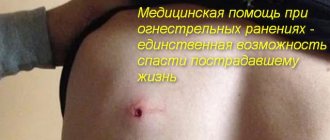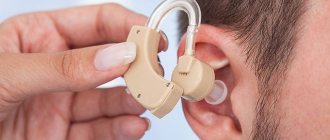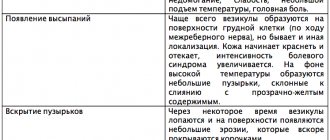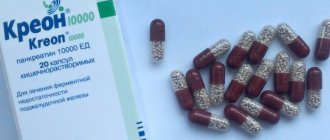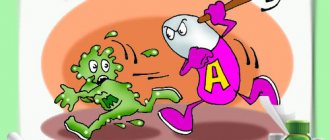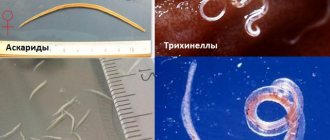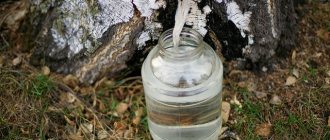Signs of carbon monoxide poisoning - headache, nausea, suffocation, impaired movement with a gas density of 0.02-0.03% and exposure to a person for 4-6 hours. At a density of 0.1-0.2% and exposure for 1-2 hours - coma occurs, breathing stops, death is possible. Intoxication by combustion products during a fire is 80% of the factors contributing to human mortality; more than 60% is due to carbon monoxide.
How does carbon monoxide affect the body?
Carbon monoxide is a special form of carbon monoxide and is most often formed during the incomplete combustion of various substances containing classical carbon. In modern conditions, the overwhelming majority of it is formed from the exhaust gases of cars with an internal combustion engine, but there are also household and natural sources of CO production.
Carbon monoxide itself, being odorless and colorless, has good penetrating ability, easily seeps through soil, partitions and even thin walls, while it is not absorbed by most simple porous materials, which makes the use of standard gas masks based on an atmospheric air filtration system ineffective (exception constitute complexes with the possibility of installing a hopcalite cartridge).
The main danger of CO for the body lies in the triple pathological effect of carbon monoxide on a number of systemically important processes:
- Blocking the delivery of oxygen to tissues and organs. CO actively interacts with hemoglobin in the blood, forming carboxyhemoglobin compounds, as a result of which the erythrocyte masses partially or completely cease to transfer oxygen to organs and tissues, which provokes almost immediate hypoxia;
- Disruption of the heart muscle. CO binds to myoglobin, which leads to a deterioration in heart function with characteristic manifestations - weakening of the pulse, the appearance of shortness of breath and arrhythmia;
- Formation of muscle weakness. Carbon monoxide pathologically affects the protein structures of smooth muscles, which leads to their weakness, sometimes partial or even complete paralysis of skeletal muscles.
The first signs of carbon monoxide poisoning
As modern medical statistics show, a person usually gets CO poisoning from prolonged inhalation of vehicle exhaust gases, especially in enclosed spaces, as well as at home against the background of improper operation of heating devices operating on combustion principles, due to leakage of household gas, and so on.
A significant portion of cases are associated with fires in enclosed spaces , transport cars, airplanes, and so on, when a person dies not from thermal effects as such, but due to very rapid CO poisoning with loss of consciousness and the inability to independently evacuate.
The primary symptoms of carbon monoxide poisoning directly depend on its concentration in the air, as well as the duration of exposure to CO on the body.
As the concentration of carbon monoxide in the blood increases, the following manifestations are noted:
- Decreased speed of psychomotor reactions;
- Deterioration in performance – both physical and mental;
- Dyspnea;
- Headache , increasing in intensity depending on the concentration of CO in the blood;
- Nausea, weakness, vomiting;
- Confusion and loss of coordination of small movements;
- Formation of hallucinations, fainting or unconsciousness, weakening of the pulse.
The above primary symptoms are characteristic of mild and moderate degrees of poisoning. In severe forms of pathology, the indicated symptoms can be combined and change almost at lightning speed.
Signs and symptoms [ edit | edit code ]
When the inhaled air contains 0.08% CO, a person feels a headache and suffocation.
When the CO concentration increases to 0.32%, paralysis and loss of consciousness occurs (death occurs within 30 minutes). At concentrations above 1.2%, consciousness is lost after two to three breaths, and the person dies in less than 3 minutes. Concentration of CO in the air, carboxyhemoglobin HbCO in the blood and symptoms of poisoning.
[7] [8]
| CO,% vol. (20°C) | CO, mg/m³ | Exposure time, h | HBCO in blood, % | Main signs and symptoms of acute poisoning |
| ≤0.009 | ≤100 | 3.5—5 | 2.5—10 | A decrease in the speed of psychomotor reactions, sometimes a compensatory increase in blood flow to vital organs. In persons with severe cardiovascular insufficiency - chest pain during exercise, shortness of breath |
| 0.019 | 220 | 6 | 10—20 | Slight headache, decreased mental and physical performance, shortness of breath with moderate physical activity. Visual perception disorders. May be fatal to fetuses and persons with severe heart failure |
| ≤0.052 | ≤600 | 1 | ||
| ≤0.052 | ≤600 | 2 | 20—30 | Throbbing headache, dizziness, irritability, emotional instability, memory loss, nausea, poor coordination of fine hand movements |
| 0.069 | 800 | 1 | ||
| ≤0.052 | ≤600 | 4 | 30—40 | Severe headache, weakness, runny nose, nausea, vomiting, blurred vision, confusion |
| 0.069 | 800 | 2 | ||
| 0.069—0.094 | 800—1100 | 2 | 40—50 | Hallucinations, severe ataxia, tachypnea |
| 0.1 | 1250 | 2 | 50-60 | Fainting or coma, convulsions, tachycardia, weak pulse, Cheyne-Stokes respirations |
| 0.17 | 2000 | 30 min | ||
| 0.15 | 1800 | 1.5 | 60—70 | Coma, convulsions, respiratory and cardiac depression. Possible death |
| 0.2—0.29 | 2300—3400 | 30 min | ||
| 0.49—0.99 | 5700—11500 | 2-5 min | 70—80 | Deep coma with decreased or absent reflexes, thready pulse, arrhythmia, death. |
| 1.2 | 14000 | 1-3 min | Loss of consciousness (after two or three breaths), vomiting, convulsions, death. |
- In case of mild poisoning the following appear:
- headache,
- knocking in the temples,
- dizziness,
- chest pain,
- dry cough,
- lacrimation,
- nausea,
- vomit,
- visual and auditory hallucinations are possible,
- redness of the skin, carmine-red coloring of the mucous membranes,
- tachycardia,
- increased blood pressure.
Main symptoms of poisoning
The main symptomatic complex of carbon monoxide intoxication includes many different negative manifestations.
Mild to moderate degree of intoxication
Mild and moderate forms of pathology (with carboxyhemoglobin content in the blood from 20 to 50 percent) depending on the location of the lesion. Symptoms of mild to moderate carbon monoxide poisoning:
- From the central nervous system . Headache of a girdling nature, mild at first, and later of moderate strength and intensity. Tinnitus, decreased quality of vision and hearing, nausea with vomiting, impaired coordination of movement, fogged consciousness and short-term loss of consciousness may also occur. The above manifestations are almost always primary, since it is the central nervous system that first suffers from intoxication;
- From the cardiovascular system . Increased heart rate, up to 90 beats per minute. Pain and pressure in the heart area, arrhythmia. These symptoms are formed due to feedback from the intense work of the heart, trying to clear the bloodstream of carboxyhemoglobin and improve the delivery of oxygen to all systems of the body;
- From the respiratory system . Mostly shortness of breath and rapid breathing. With mild and moderate degrees of poisoning, compensation mechanisms still operate as the body’s reverse response to a progressive lack of oxygen. This is the main symptom of such poisoning;
- From the skin and mucous membranes . Their redness is observed, which is the result of increased blood flow speed.
Similar articles
Consequences of carbon monoxide poisoningFirst aid for carbon monoxide poisoningSymptoms of household gas poisoning and first aid
Severe degree of intoxication
This category includes all pathological manifestations that form when the carboxyhemoglobin content in the blood is 50 percent or more.
As a rule, the lack of quick and correct first aid for severe forms of carbon monoxide poisoning leads to death.
Symptoms of severe carbon monoxide poisoning:
- From the central nervous system. Prolonged loss of consciousness, convulsions, uncontrolled bowel movements and urination, coma. Formed with deep lesions of nerve structures;
- From the cardiovascular system . Increased heart rate, up to 130 beats per minute, while it is faintly palpable. Severe arrhythmia against the background of a significant increase in the risk of myocardial infarction (with a complete stop in the delivery of oxygen to the heart muscle);
- From the respiratory system . Intermittent and shallow breathing caused by systemic damage to the center of regulation of this function in the brain against the background of the development of generalized decompensation processes;
- From the skin and mucous membranes. Pallor of these structures due to profound disruption of oxygen supply to peripheral systems.
Prevention measures
Every year, medical statistics are updated with recorded cases of poisoning by combustion products. The mortality rate of victims due to carbon dioxide intoxication accounts for more than a quarter of all recorded cases.
In order not to be poisoned by a dangerous substance, you need to follow simple, but very important rules of prevention for preserving life and health:
- Employees of industrial enterprises working with chemical reagents must strictly follow the instructions;
- In apartment buildings, regularly check the serviceability of heating and heating devices;
- In the private sector, regularly check the serviceability of chimneys and stoves and clean them properly;
- When using devices with an open combustion function, turn on the ventilation or thoroughly ventilate the room;
- When staying in small utility rooms with the machine engine running, exercise extreme caution;
- Protect yourself from long stays near highways, industrial or factory complexes.
It is strictly prohibited to stay inside a car for a long time with the engine running.
If poisoning does occur and you feel at least one of the symptoms described above, seek medical help immediately. Timely intervention by doctors will not only help prevent health problems, but will also save lives.
Carbon monoxide is a toxic substance that, when exposed to the human body, leads to a critical deterioration of the condition. The danger of this substance is that when it penetrates the blood, it irreversibly binds hemoglobin, disrupting the transport of vital oxygen to all tissues. If first aid for carbon monoxide poisoning is not provided in a timely manner, death can occur.
Symptoms for atypical forms of poisoning
In some cases of carbon monoxide poisoning, atypical symptoms with a special mechanism of development are diagnosed:
- Instant fainting and severe drop in blood pressure . As modern researchers suggest, this combination of manifestations, which sometimes occurs even in cases of mild degrees of poisoning, develops due to a selective disruption of the center of regulation of vascular tone in the brain. The victim almost instantly loses consciousness due to a drop in blood pressure (parameters from 70 to 50 millimeters of mercury and below), pallor, sometimes “cyanosis” of the mucous membranes and skin is observed, with preservation of respiratory function;
- Euphoria . It is explained by the direct toxic effect of silicon monoxide on individual centers of higher nervous activity in the brain. As the concentration of CO in the blood increases, mental, sexual and physical arousal with euphoria is noted, which after a while is replaced by vivid hallucinations, delirium, loss of consciousness and disturbances in both respiratory and cardiac activity;
- Lightning poisoning . It is formed at very high concentrations of carbon monoxide in the air - from 1 percent in absolute equivalent and above. In the first minute, a person immediately loses consciousness and develops signs of severe CO poisoning, missing the classic primary symptoms. At 2-3 minutes, convulsions and vomiting are observed. By 3-5 minutes they are replaced by convulsions, respiratory paralysis and death.
Features of treatment
In case of severe poisoning, a person must be hospitalized. Already in a hospital setting, hyperbaric oxygenation . This is an artificial supply of oxygen to the body within a pressure chamber. There are a number of treatment methods that depend on the stage of intoxication:
- Ventilation of the lungs uses a specialized device that removes the remaining toxic substances from the lungs.
- Blood transfusion (whether this is whole blood or red blood cells).
- Normalization of acid and alkaline metabolism by introducing appropriate drugs.
Timely seeking medical help reduces the risk of brain depression and other complications. A quick recovery ensues.
If carbon monoxide poisoning occurs, emergency assistance should be provided as soon as possible. This way, a person has every chance of staying alive and maintaining health at an acceptable level.
Carbon monoxide (CO) or carbon monoxide is a colorless and odorless substance that is a product of incomplete combustion of carbon-containing substances. It is determined in exhaust gases, smoke during a fire, etc. Without the use of special instruments, it is impossible to assess the presence and concentration of carbon monoxide in the ambient air.
Complications and consequences
In addition to the pathological symptoms directly during the poisoning process, the victim may develop various complications in the post-reactive period, even with timely and complete provision of both first pre-medical and subsequent inpatient and resuscitation care.
Short term
Most of the consequences described below occur 1-2 days after carbon dioxide poisoning:
- CNS . Lesions of the nervous periphery with limitation of motor activity and sensitivity, constant pain in the head, brain swelling, disruptions in the gastrointestinal tract and urinary system, development of new and progression of chronic mental diseases, visual and hearing impairment;
- Respiratory system. Pulmonary edema ;
- The cardiovascular system. Violation of coronary circulation and heart rhythm;
Medium term
Most of the consequences described below occur 2-30 days after carbon monoxide poisoning:
- Central nervous system, paralysis, various chorea . Systemic psychoses with memory loss, alternating with attacks of apathy, are also diagnosed. Less commonly – blindness and parkinsonism;
- Respiratory system . Secondary bacterial pneumonia, obstructive bronchitis;
- The cardiovascular system. Myocarditis, angina pectoris, myocardial infarction, cardiac asthma.
First aid
Timely and qualified provision of first aid in the vast majority of cases of carbon monoxide poisoning saves the life of the victim and significantly reduces the risks of developing numerous complications in the post-reactive period of the pathology.
Basic algorithm of first aid actions:
- You will be interested...
Immediate transportation of the victim from the CO affected area. It must be carried out quickly, preferably using personal protective equipment, both for the patient and for the person providing assistance. To temporarily neutralize the negative direct effects of carbon monoxide, you can use a gas mask with a hopcalite cartridge - the latter, due to the inclusion of a special catalyst (a combination of silver, copper and manganese oxides) in the porous substance, converts CO into carbon dioxide, thus filtering the poisonous gas for a short period of time. The hopcalite cartridge must be accompanied by an additional gasket with silica gas, which neutralizes the water vapor formed during the synthesis of silicon dioxide. All other types of gas masks based on air filtration are not effective! If a rescuer stays indoors for a long time (more than 5 minutes) with a high concentration of CO, the only acceptable personal protection system may be a completely self-contained mask with an independent balloon supply of the oxygen-air mixture;
First aid for ammonia poisoning - Preparing for resuscitation . After removing the victim from the scene of the incident, the gas mask is removed from him, the chest and neck are freed from clothing. An ambulance is called;
- Resuscitation measures . Oxygen is supplied directly to the lungs. In the absence of breathing, it is necessary to carry out resuscitation measures, ventilating the lungs manually or using breathing devices. In cases where there are clear signs of heart failure, 1 milliliter of cordiamin is administered intravenously and a similar dose of a ten percent caffeine solution is administered subcutaneously. In the absence of cardiac activity - indirect cardiac massage or use of a defibrillator with parallel administration of adrenaline and sodium bicarbonate intravenously;
- In the event of a long absence of an ambulance team and minimal independent restoration of the victim’s basic vital functions (breathing and heartbeat), priority hospitalization of the patient to the nearest intensive care unit on any transport.
Treatment at home with folk remedies
Of course, natural products are known for their absolute safety and environmental friendliness, but each ingredient intended for the preparation of a particular product is endowed with certain properties, which is why it can have different effects on the human body!
If you decide to use traditional medicine: go to the doctor and show the prescription. Got approval? Feel free to prepare the mixture. Ban? Forget about traditional medicine!
So, what do adherents of traditional medicine recommend using to eliminate the negative consequences?
I will tell you about some time-tested remedies.
To prepare a healing remedy, we arm ourselves with:
- juicy cranberries – 100 gr.;
- aromatic lingonberries – 200 gr.;
- water – 300 gr.
Take the berries, wash them thoroughly, remove the stems. Pour water into the kettle, put it on the stove, wait for it to boil. In the meantime, turn the berries into puree using a sieve, meat grinder or blender. Place the pulp in a container, add water and stir thoroughly. Cover the saucepan with a lid, wrap it in a towel and leave the product for 2 hours. Then strain it using gauze or a strainer.
We take the product 6–7 times a day, 50 ml. A healthy and aromatic cocktail has cleansing, diuretic, diaphoretic, protective, nourishing and antitoxic properties.
To prepare a useful tincture of knotweed, we stock up on:
- dried crushed knotweed - 2 tbsp. l.;
- water – 2 tbsp.
Pour some water into the kettle, put it on the stove and wait for it to boil. Put the grass - knotweed - into a bowl. Then pour boiling water over it, stir, cover the container with a lid, wrap it in towels, and wait 3 hours. Using a sieve or gauze, strain the potion.
We take the product 2 times a day, ½ cup. The drink made from knotweed is known for its strengthening, restorative, nourishing, protective, anti-inflammatory, antiviral, and cleansing properties.
To prepare Rhodiola rosea tincture, we will need:
- Rhodiola rosea root – 100 g;
- quality vodka – 400 ml.
Grind the rhodiola root, put it in a jar and fill it with vodka. Mix the ingredients thoroughly, seal the container with a lid and place in a dark place for 7 days. After a week, strain the tincture through a sieve or cheesecloth.
We take the substance 15 drops three times a day (I agree, it’s not enough). The product is known for its analgesic, tonic, anti-inflammatory, antitoxic, restorative, cleansing effect.
To prepare a healthy decoction, we stock up on:
- dried crushed dandelion officinalis – 6 g;
- water – 200 gr.
Pour crushed dandelion into a container, fill it with cool water, mix the ingredients thoroughly. Cover the container with a lid and place it on the stove. Brew the potion for 15 minutes. Remove the container from the stove, wrap it in towels and leave for 30 minutes. Then strain the product using a sieve or gauze.
Take 1 tbsp of decoction. l. three times a day. The substance demonstrates excellent antitoxic, cleansing, diuretic, antimicrobial and restorative properties.
Remedies prepared according to simple recipes will help restore health in a short time.
Carbon monoxide poisoning is a dangerous phenomenon, so at the slightest symptoms, do not hesitate, provide first aid and call an ambulance. Dear readers, do not play with fire, follow safety rules, because life is a gift that can only be received once. Be healthy!
Quote of wisdom: If you want to understand life, then stop believing what they say and write, but observe and feel (A. Chekhov).
Victims who have received moderate or severe poisoning are subject to mandatory hospitalization. The main antidote is 100% oxygen. Its uninterrupted intake into the body is 9-16 l/min. occurs through a special mask placed on the patient’s face.
In severe cases, the victim undergoes tracheal intubation and is connected to a ventilator. In a hospital setting, infusion therapy is also carried out using a course of drips with sodium bicarbonate - this helps to correct hemodynamic disorders.
Another drug used by doctors to help victims of carbon monoxide poisoning is Acizol. This drug is administered intramuscularly into the body. Its action is based on accelerating the breakdown of carboxyhemoglobin while simultaneously saturating the blood with oxygen. "Acyzol" reduces the toxic effect of CO on muscle tissue and nerve cells.

